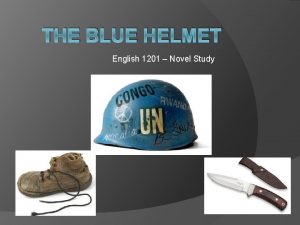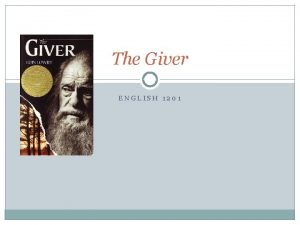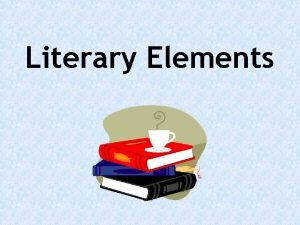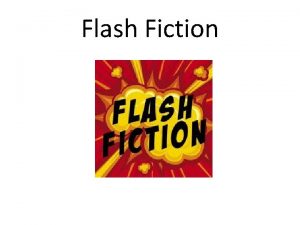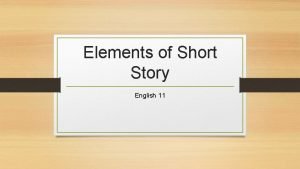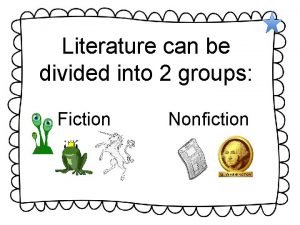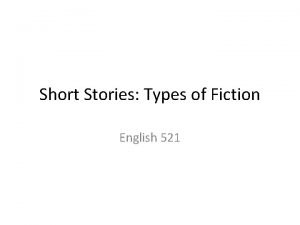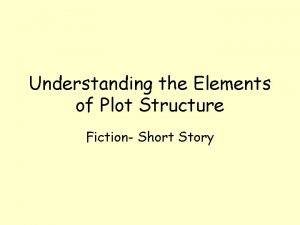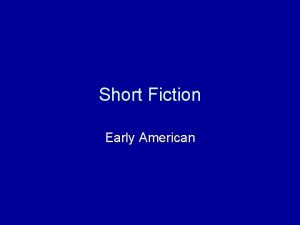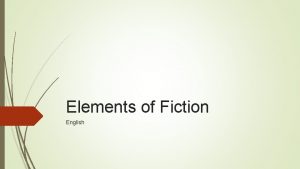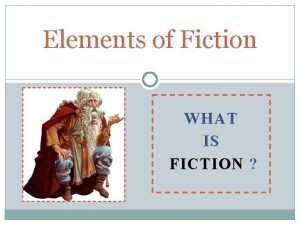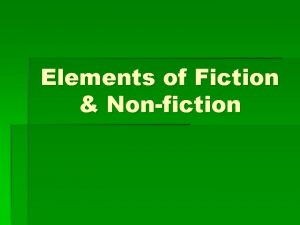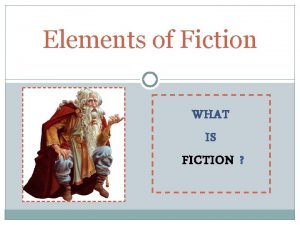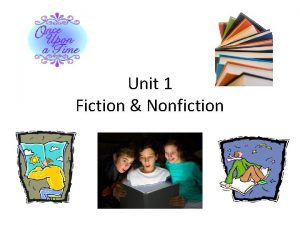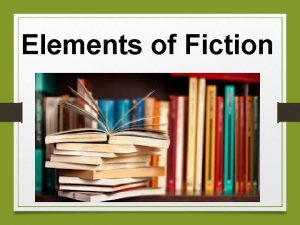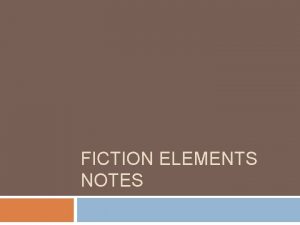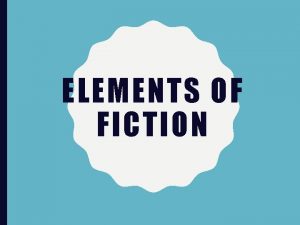English 1201 Elements of Short Fiction Characteristics of
















- Slides: 16

English 1201 Elements of Short Fiction

Characteristics of a Short Story § It is a literary form used by an author to entertain. § It is written in prose and is fiction but may be based on fact. § It is narrative (that is it tells a story). § It can usually be read in one “sitting”. § It presents a situation or experience in which the reader shares. § It is centred on conflict ( a struggle, disagreement or problem).

Common Elements § Every short story has common elements; these are: § 1. Character § 2. Plot § 3. Setting § 4. Point of View § 5. Theme

Character and Characterization § Characters are the fictitious “people” in a § piece of literature. § Authors provoke reactions from readers by developing their characters in various ways.

Types of characters § Primary characters: the most important characters in a work of fiction • protagonist: the main character • antagonist: the character who opposes or is in conflict with the protagonist. § Secondary characters: characters of less importance than the protagonist and antagonist

Qualities of characters § Round characters: well‐developed characters § Flat characters: one‐dimensional characters § Stereotypes: characters who fulfill “stock” roles § Developing Characters: are characters who change their outlook during the story. ( What was the change, when, what caused it? ) § Dynamic characters: characters who undergo changes over the course of the work of fiction § Static characters: characters who stay the same over the course of the work of fiction § Foil: is a character opposite in one major respect (i. e. personality trait) to that of the main character.

Characterization § Characterization is the method by which the author reveals character. This can be done directly or indirectly. § Direct Characterization – the author develops the personality of a character by direct statements. § Indirect Characterization – is when the author reveals a character’s personality through their thoughts, words, actions, as well as, physical appearance and what others say about them.

Plot § Plot - refers to the events that take place in a work of fiction. Every plot is made up of a series of incidents that are related to one another. § Plot Diagram (Freytag’s Pyramid) German critic Gustav Freytag conceived the structure of a typical five‐act play as a pyramid. § This pattern of Exposition, Rising Action, Climax, Falling Action, and Dénouement can be applied to a wide variety of literary works.

Plot Diagram (Freytag’s Pyramid) 3 2 4 5 1

1. Exposition § This usually occurs at the beginning of a short story. Here the characters are introduced. We also learn about the setting of the story. Most importantly, we are introduced to the main conflict (main problem).

2. Rising Action § This part of the story begins to develop the conflict(s). A building of interest or suspense occurs.

3. Climax § This is the turning point of the story. Usually the main character comes face to face with a conflict. The main character will change in some way.

4. Falling Action § All loose ends of the plot are tied up. The conflict(s) and climax are taken care of.

5. Resolution § The story comes to a reasonable ending. All loose ends are tied up.

Setting § Setting refers both to the place, time, and circumstances in which a work takes place. § Setting often affects or contributes to the atmosphere of the story.

Point of View § § § § refers to the “person” who tells the story in a work of fiction. • Viewpoint refers, in other words, to the narrator. Viewpoint • Types of narrators – First‐person narrator (“I”): when the narrator is one of the characters in the work and tells the reader his or her own thoughts and feelings – Second‐person narrator (“You”): when the reader becomes the main character in the work – Third‐person narrator (“He”/”She”): when the narrator focuses on other characters rather than on himself or herself
 Long and short
Long and short English 1201
English 1201 The blue helmet chapter summary
The blue helmet chapter summary Elements of non fiction
Elements of non fiction 1201 broad rock blvd
1201 broad rock blvd How does the approaching ceremony of twelves affect jonas
How does the approaching ceremony of twelves affect jonas Skilled trades 1201
Skilled trades 1201 Short story elements of fiction
Short story elements of fiction Flash fiction elements
Flash fiction elements 5 elements of a short story examples
5 elements of a short story examples It is genre of speculative fiction dealing with imaginative
It is genre of speculative fiction dealing with imaginative Contemporary realistic fiction vs historical fiction
Contemporary realistic fiction vs historical fiction Fictional character examples
Fictional character examples Short stories
Short stories Short story
Short story Ano ang maikling kwento
Ano ang maikling kwento Plot structure of fiction
Plot structure of fiction


